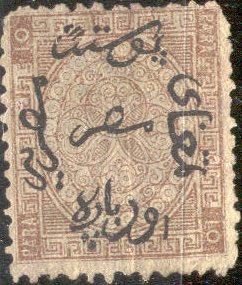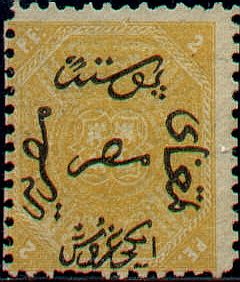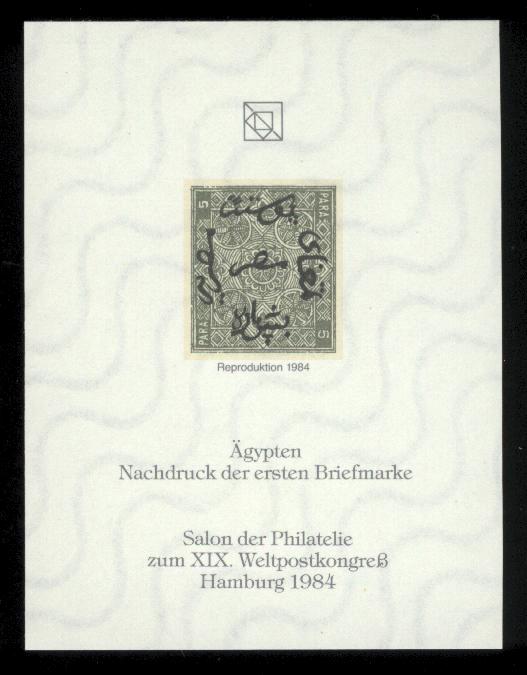






Return To Catalogue - Egypt 1867 issue - Egypt 1872 issue - Egypt 1879-1920 -Postage due and official stamps - Miscellaneous - Suez Canal Company
Note: on my website many of the
pictures can not be seen! They are of course present in the cd's;
contact me if you want to purchase them: evert@klaseboer.com.
Egypt is a country situated in North-eastern Africa. It used to be a Turkish province, but was occupied by the British in 1882. It became a protectorate in 1914 and a monarchy in 1922.
5 pa grey 10 pa brown 20 pa blue 1 Pi lilac 2 Pi yellow 5 Pi red 10 Pi blue
For the specialist, these stamps (except the 1 Pi lilac) have watermark 'Pyramid'. The 1 Pi lilac has no watermark. Inverted watermarks are very common (the 2 Pi almost only exists with inverted watermark). The stamps were perforated 12 1/2. Imperforate stamps seem to be proofs. A misprint exists; a stamp with the colour of the 5 Pi stamp, but with the inscription of the 10 Pi (RRR):

Misprint; see bottom inscription right hand side.
Value of the stamps |
|||
vc = very common c = common * = not so common ** = uncommon |
*** = very uncommon R = rare RR = very rare RRR = extremely rare |
||
| Value | Unused | Used | Remarks |
| 5 pa | *** | *** | |
| 10 pa | *** | *** | |
| 20 pa | *** | *** | |
| 1 Pi | *** | ** | |
| 2 Pi | *** | *** | Bisected stamps were used from 16 to 31 July 1867 (lack of ordinary 1 Pi stamps) |
| 5 Pi | RR | RR | |
| 10 Pi | RR | RR | |
The stamps were printed by the Pellas Brothers in Genua.
Cancels:
A nice website on cancels of Egypt: http://www.egyptstudycircle.org.uk/post_marks.html.
Forgeries
Example:

(Salama forgery)
This dangerous forgery was made by Salama who used genuine watermarked paper (and in some cases printer's waste).
Other forgeries:

Three different forgeries of the 1 Pi value

A forgery of the 20 p, imperforate, blue and black text is
different from the genuine 20 pa stamp, for example all letters
of the upper inscription should be joined (just to the right of
the center), the 'P' of the upper 'PARA' is misformed and the '2'
in the upper right corner is very badly done.

A forgery of the 10 p, obtained from Bill Claghorn's forgery
site: http://members.tripod.com/claghorn1p/Egypt/Egypt02x.htm,
again the upper inscription is not joined in the center.

Another forgery of the 10 Pi value obtained from Bill Claghorn's
site: http://members.tripod.com/claghorn1p/Egypt/Egypt06x.htm

This forgery of the 5 Pi has 6 petals instead of 7 in the central
flower design.



Dubious items, two of them appear to have the 'POSTE EGIZIANE
PORTO SAID 3 GEN 78 T1' which was also used on forgeries of the
next issues and on forged postage due stamps.

A 'reprint' made for the 'Salon der Philatelie' in Hamburg in
1984.

Another two 'reprints' issued in 1966 for the centenary of the
first Egyptian stamp.
For stamps of Egypt issued in 1867, click here.